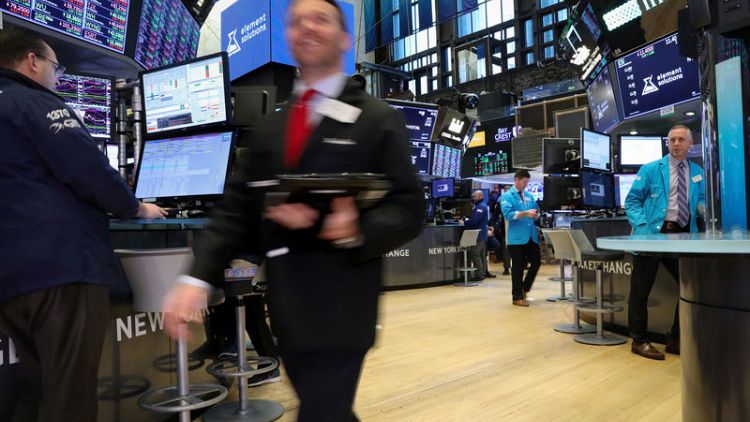By Herbert Lash
NEW YORK (Reuters) - Bond yields rose on Friday after U.S. employment and manufacturing data underscored a strong economy with little wage inflation, while a gloomy outlook from Amazon.com helped drag a gauge of global equity markets lower
U.S. job growth surged in January, with employers hiring the most workers in 11 months, the Labor Department said, pointing to underlying strength in the economy despite an uncertain outlook that has left the Federal Reserve wary about more interest rate hikes this year.
The employment report showed a tepid gain in hourly earnings while the ISM "prices paid" index slipped more than expected, the latest data that show a modest inflationary pace.
Prices in the U.S. futures markets indicate traders see no rate hikes ahead, though short-term futures show they remain convinced the U.S. central bank's next move will be a rate cut rather than a hike.
Stocks pared early session gains on the economic data. MSCI's gauge of stocks across the globe fell 0.09 percent and emerging market stocks lost 0.05 percent.
Earlier in Europe, the pan-European STOXX 600 index closed up 0.21 percent.
Amazon.com fell 5.3 percent after its quarterly sales forecast fell short of Wall Street estimates and overshadowed record sales and profit during the holiday season.
The results weighed on the Nasdaq, while the S&P consumer discretionary index fell 1.91 percent, the biggest losing sector on the S&P 500 index.
Amazon's results suggested U.S. consumers may be spending less, a potential sign of a slowing economy, said Cliff Hodge, director of investments at Cornerstone Wealth.
"They've been in a very strong environment, but you can see things start to slow down a little bit," Hodge said.
The Dow Jones Industrial Average rose 0.35 points, or 0 percent, to 25,000.02. The S&P 500 lost 4.83 points, or 0.18 percent, to 2,699.27 and the Nasdaq Composite dropped 34.31 points, or 0.47 percent, to 7,247.42.
While fourth-quarter results have mostly beaten expectations, there have been 27 negative earnings pre-announcements issued by companies in the S&P 500 index, compared with nine positive, data from Refinitiv shows.
The negative-to-positive ratio is now 3.0, which is above the long-term average of 2.7 and above the prior four-quarter average of 1.5, Refinitiv said.
The data suggests slower U.S. growth and adds to a growing list of economic readings indicating slowing global growth. The Caixin/Markit index of Chinese manufacturing fell to its lowest since February 2016.
Oil prices rose, lifted by signs the United States and China could soon settle their protracted trade dispute, while producer cuts and U.S. sanctions on Venezuelan exports helped tighten supply.
International Brent crude oil futures settled up $1.91 to $62.75 per barrel. U.S. West Texas Intermediate (WTI) futures rose $1.47 to settle at $55.26.
The dollar index fell 0.01 percent, with the euro up 0.14 percent to $1.146. The Japanese yen weakened 0.57 percent versus the greenback at 109.52 per dollar.
U.S. gold futures settled down 0.2 percent to$1,322.10.
Benchmark 10-year U.S. Treasury notes fell 15/32 in price to push their yield up to 2.6878 percent.
"The big news of the week is the tone of the Fed has turned a bit dovish. The outlook for a tightening phase has come to an end," said Minh Trang, senior currency trader at Silicon Valley Bank in Santa Clara, California.
(Reporting by Herbert Lash; additional reporting by Richard Leong; Editing by Dan Grebler and Sandra Maler)



